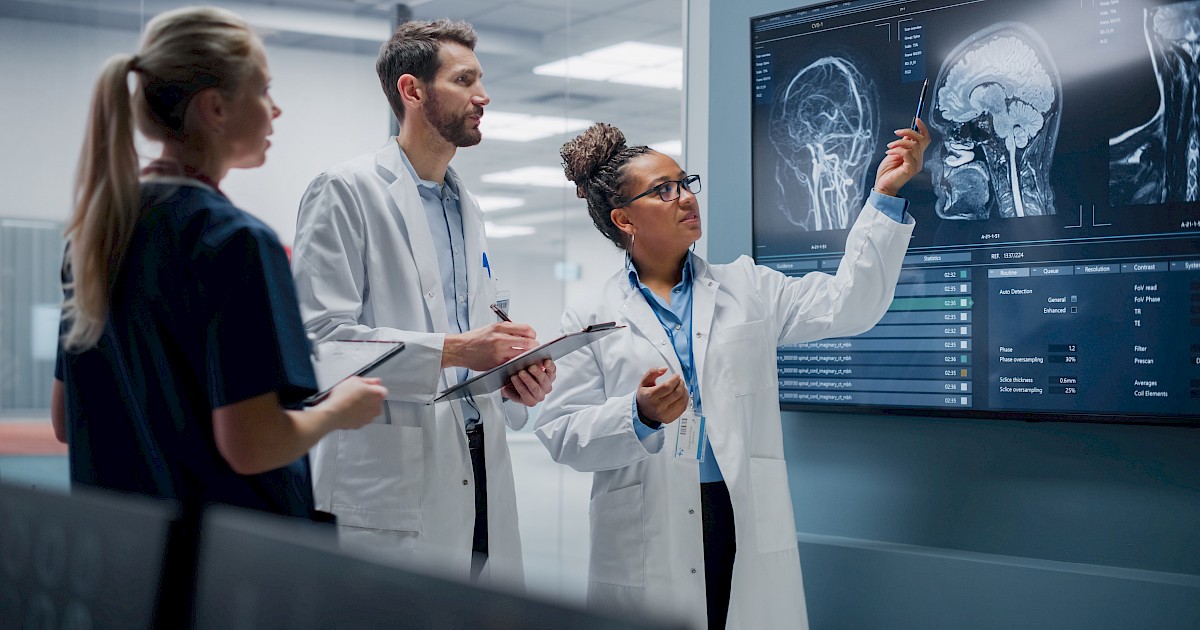In the News: The Evolution of Healthcare Trends

Healthcare is an industry marked by rapid change, from constantly advancing technology to groundbreaking medicine and vaccine development.
This month’s news roundup explores the evolution of the healthcare industry — from cybersecurity to telehealth to artificial intelligence — and how those trends will continue to impact healthcare systems in the coming year.
The 10 biggest trends revolutionizing healthcare in 2024
In 2024, several key societal drivers will impact healthcare. The evolution of artificial intelligence (AI) will undoubtedly shift healthcare in a range of ways, from how medicine is developed to the business and commercial side of healthcare. At the same time, an aging population will drive a shift to preventive medicine, with the goal of preventing those individuals from becoming an overwhelming burden on the healthcare system.
These factors, along with economic uncertainty, will drive the prominent healthcare trends of 2024, including personalized medicine, digital twins, IoT-powered virtual hospitals, and more.
Medical device security is a top challenge for healthcare CIOs
Cyberattacks on healthcare systems can cost up to $11 million, but the effects go even deeper when you consider the impact on patient safety. With this in mind, the FDA has mandated increased security measures for medical device vendors to mitigate vulnerabilities.
Healthcare CIOs face challenges in securing medical devices due to organizational structures, outdated operating systems, and complex device inventories. Healthcare organizations must ensure that all medical and IoT devices adhere to standard information security processes and perform a comprehensive risk assessment on each connected device.
Can AI tear down healthcare’s data silos?
The healthcare industry often grapples with communication and coordination challenges. AI holds promise in addressing these issues. One notable target for AI-driven improvement is the life science sales and marketing segment. This sector frequently suffers from inefficiency, with siloed and poorly coordinated teams focusing on limited, controllable metrics.
Some companies are now harnessing AI to help sales representatives identify factors affecting their efforts and to unite data for achieving a higher return on investment in sales and marketing spend. By leveraging AI to rectify data imbalances and streamline processes, the healthcare industry can potentially realize significant gains in efficiency and coordination.
Generational gaps emerge in telehealth satisfaction
Recent research reveals a generation gap in telehealth satisfaction, with millennials and Gen Z reporting the highest scores and baby boomers and pre-boomers reporting notably lower satisfaction levels. Younger patients appreciate the convenience and accessibility of telehealth, while older generations face challenges with digital interfaces and trust issues. This emphasizes the need for healthcare providers to ensure that telehealth platforms are user-friendly, accessible, and capable of building trust across all patient demographics.
FDA finalizes guidance on cybersecurity for medical devices
The FDA has issued final guidance on cybersecurity requirements for medical devices, which comes into effect after the agency recently gained the authority to issue “refuse to accept” decisions to applicants who do not provide the required information.
The guidance reflects the evolving landscape of cybersecurity threats in the medical device industry. The FDA expects manufacturers to have sufficient time to prepare premarket submissions that comply with the new requirements, and the guidance has been positively received by industry groups for its alignment with best practices and risk-based approach.

